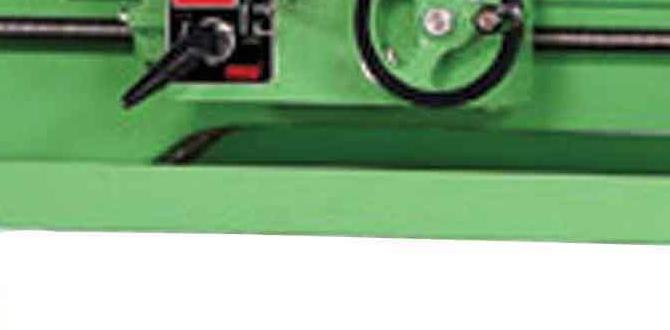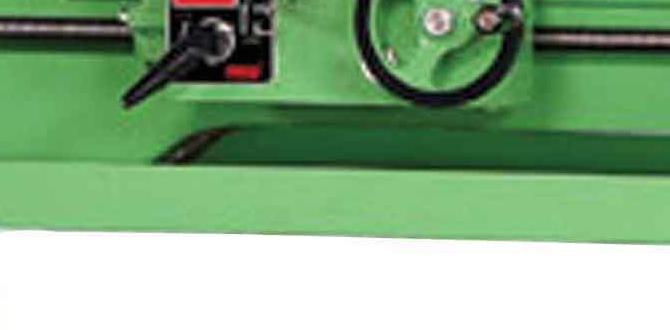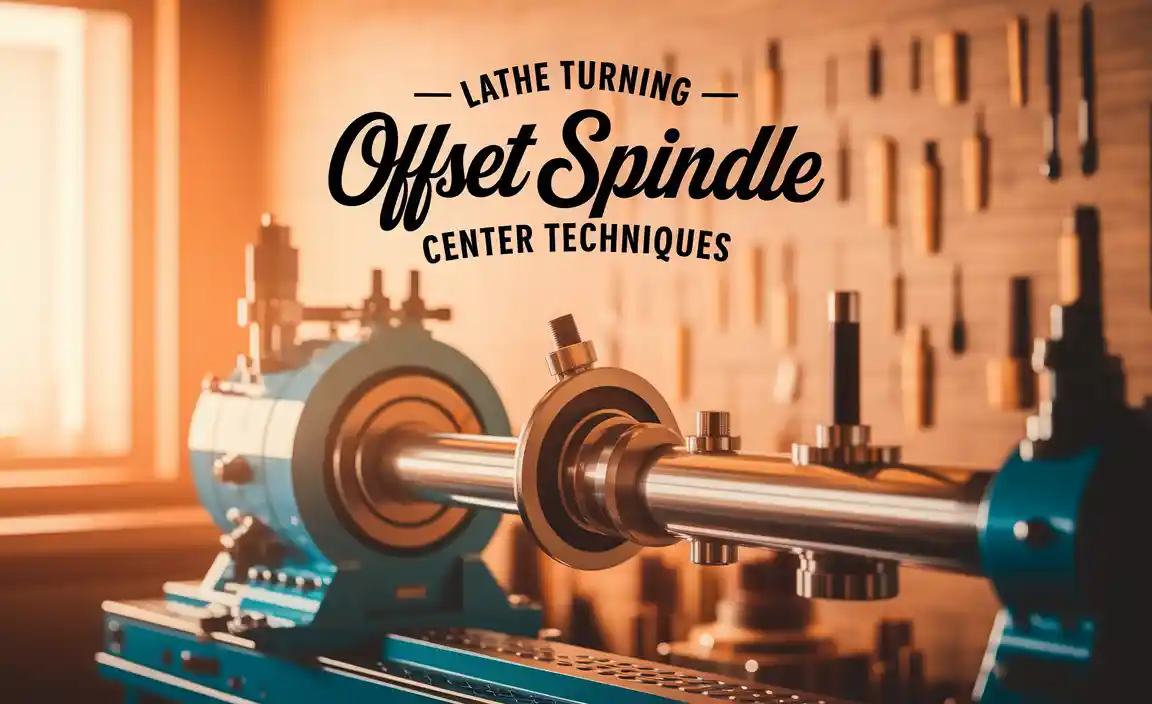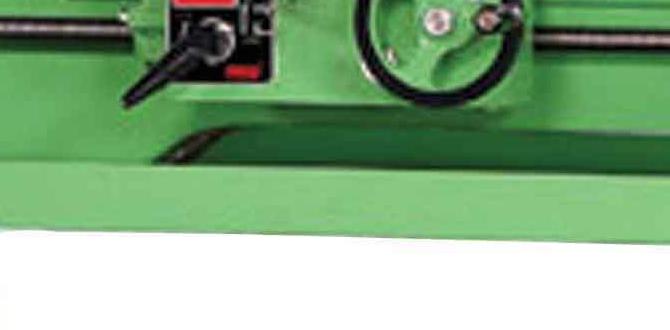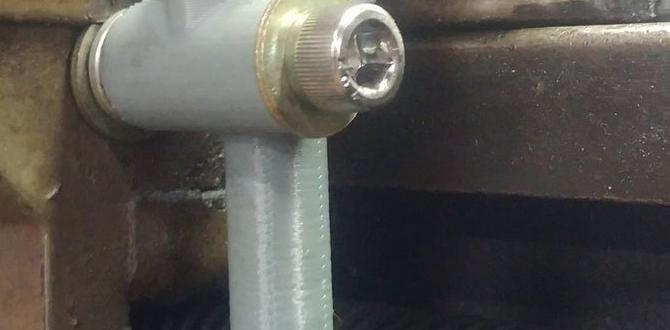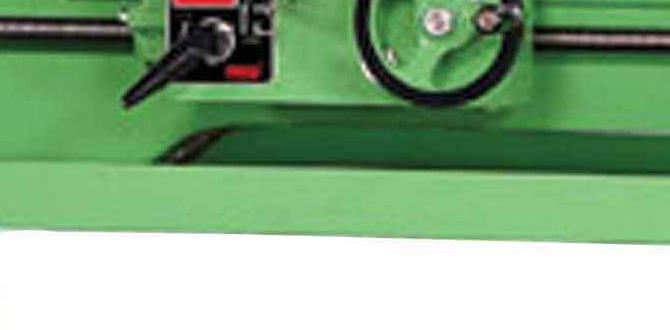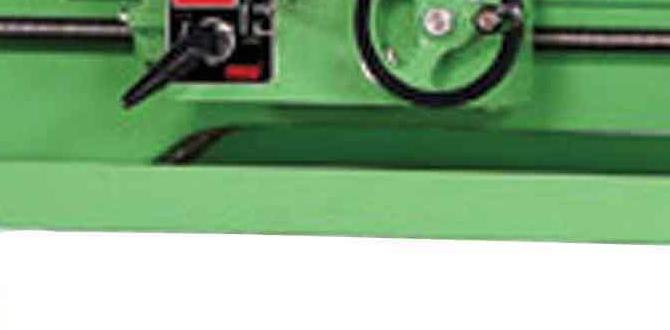Best wood lathe with stand under $300: Your essential guide for hobbyists! Find affordable, reliable options to start turning today with confidence and ease.
Are you dreaming of crafting beautiful wooden bowls, spindles, or custom projects? Getting started in woodworking can feel overwhelming, especially when tool prices seem sky-high. Finding a reliable wood lathe with a stand for under $300 might sound like a challenge, but it’s absolutely achievable. Many beginner woodworkers face this exact hurdle, wondering if a budget setup can deliver real results. Don’t worry! This guide is here to demystify the process, showing you exactly what to look for and how to make the best choice for your workshop. We’ll break down everything you need to know, from essential features to safety tips, so you can start turning wood with excitement and confidence.
Choosing Your First Wood Lathe: What to Look For Under $300
When you’re on the hunt for a wood lathe with a stand under $300, it’s important to know what makes a lathe suitable for beginners. You’re looking for a machine that’s sturdy, safe, and capable enough to handle basic woodworking projects. It doesn’t need all the bells and whistles of a professional model, but it should provide a stable platform for learning and practicing your turning skills. Think of it as your starter car – reliable for getting you from point A to point B without breaking the bank.
Key Features to Consider:
- Motor Power: For most beginner projects like pens, small bowls, and spindles, a motor in the 0.5 to 1 horsepower range is usually sufficient. More power means you can handle slightly larger or denser woods, but for under $300, you’ll likely be in this range.
- Swing and Distance Between Centers: “Swing” refers to the maximum diameter of a workpiece the lathe can turn. “Distance between centers” (or bed length) is the maximum length of a workpiece it can accommodate. A common starter size might offer a 10-inch swing and 16-18 inches between centers.
- Headstock and Tailstock Taper: Look for standard tapers like Morse Taper (MT1 or MT2). This ensures you can easily find and attach common accessories like chucks and live centers.
- Tool Rest: A sturdy, adjustable tool rest is crucial for supporting your turning tools safely and effectively.
- Stand: For a “wood lathe with stand under $300,” the stand is often a simple, collapsible metal frame. Ensure it’s stable and doesn’t wobble excessively when the lathe is running.
- Speed Control: Variable speed control is a big plus, allowing you to adjust the rotational speed based on the workpiece size and material. Some budget models might have a few fixed speed settings.
Understanding Lathe Specifications
Let’s decode those numbers you’ll see in the product descriptions. These specifications tell you what kind of projects your lathe can handle:
- Swing: Measured by lifting the headstock over the bed and measuring the distance. A 10-inch swing means you can turn workpieces up to 10 inches in diameter.
- Distance Between Centers: This is simply the maximum length of wood you can fit between the headstock spindle and the tailstock center.
- Motor Size (HP): Horsepower indicates the motor’s strength. Higher HP is better for removing material faster and tackling tougher jobs, but for beginners, 0.5-1 HP is perfectly fine for most tasks.
Top Picks for a Wood Lathe with Stand Under $300
Finding specific models that consistently stay under the $300 mark with a stand can be tricky as prices fluctuate and new models are released. However, certain brands and types of lathes are known for offering great value in this budget range. While I can’t list exact current prices that might change daily, here are brands and models that often fall into this category or very close to it, especially during sales events. It’s always best to check current pricing from major retailers like Amazon, Rockler, or Grizzly Industrial.
Potential Brands and Models to Watch For:
- WEN: WEN is a brand that frequently offers well-regarded entry-level tools. They often have mini-lathes with stands that hit this price point. Look for their models with around 10-inch swing and 16-18 inch distance between centers.
- JET: While some JET lathes can be pricier, they sometimes have entry-level models or previous versions on sale that might dip into the sub-$300 range. Keep an eye out for their smaller benchtop lathes if they come bundled with a stand.
- Shop Fox: Similar to JET, Shop Fox offers a range of woodworking tools. Their smaller lathes might be found with stands within your budget, particularly during promotional periods.
- Generic/Unbranded Mini Lathes: Many online marketplaces offer mini lathes with simple stands from less-known manufacturers. These can be very budget-friendly, but it’s crucial to read reviews carefully for quality and stability.
Comparing Budget Lathe Options
When comparing these budget options, pay close attention to user reviews. Here’s a table showing typical features you might find in this price range and what to prioritize:
| Feature | Typical in Sub-$300 Lathes | What to Prioritize |
|---|---|---|
| Motor Power | 0.5 – 1 HP | At least 0.5 HP for basic tasks. 1 HP is better if available. |
| Swing Capacity | 8 – 12 inches | Aim for 10 inches or more for more project versatility. |
| Distance Between Centers | 14 – 18 inches | Longer is better for spindle turning. 16-18 inches is common. |
| Stand Type | Collapsible metal frame | Check reviews for stability. Some might require bolting to the floor. |
| Speed Control | Fixed speeds or basic variable speed (often belt-driven) | Variable speed is ideal. If fixed, ensure it has ~3-4 settings. |
| Included Accessories | Faceplate, spur center, live center, basic tool rest | These are good starters. You’ll likely want more later. |
Remember, a lathe is a significant tool. Even on a budget, investing in one that feels stable and has decent power will make your learning experience much more enjoyable and rewarding. Don’t be afraid to look for sales and compare prices across different retailers.
Essential Accessories for Your New Lathe Setup
Once you’ve found your wood lathe with a stand under $300, you’ll realize that the lathe itself is just the beginning. To actually start turning, you’ll need a few key accessories. While you can buy these piecemeal as your skills and projects grow, getting the basics right away will have you turning in no time. Think of these as your essential toolkit to complement your new machine.
Must-Have Accessories for Beginners:
- Chucks: A chuck is what holds your workpiece onto the lathe spindle. For beginners, a three-jaw scroll chuck is versatile. It can grip round stock for bowls or external gripping, and internal gripping for smaller items. While a good chuck can cost more than your lathe, some budget-friendly options exist, or your lathe might come with a basic faceplate for initial use.
- Turning Tools: You’ll need a set of basic woodturning chisels. For beginners, a good starter set typically includes:
- Gouge: For roughing out shapes and hollowing. A “bowl gouge” or “spindle gouge” is a good start.
- Scraper: To smooth surfaces, especially on bowls.
- Skew Chisel: For scraping and cutting, useful for creating beads, coves, and smooth cuts on spindles.
- Parting Tool: To cut grooves and separate the finished piece from the stock.
- Centers: Your lathe will likely come with a spur center (which digs into the wood on the headstock side) and a live center (which rotates with your workpiece on the tailstock side). These are essential for turning between centers, which is common for spindle turning.
- Faceplate: A flat disc that you screw your wood onto. Great for turning larger, flatter pieces or when a chuck is overkill.
- Safety Gear: This is non-negotiable!
- Safety Glasses or Face Shield: Always wear eye protection. A full face shield is highly recommended when turning.
- Dust Mask or Respirator: Wood dust can be harmful.
- Hearing Protection: Lathes can be noisy.
- No Loose Clothing or Jewelry: Anything that can catch on the spinning workpiece is a major hazard.
- Sanding Supplies: Sandpaper in various grits is crucial for finishing your turnings.
- Wood for Turning: Start with softer, easier-to-turn woods like pine, poplar, or basswood.
When to Upgrade: Knowing Your Lathe’s Limits
Your $300 lathe is a fantastic starting point, but it has limits. As you gain experience and tackle larger, denser, or more complex projects, you might find yourself wanting more power, a larger swing capacity, or a more robust headstock for advanced chuck mounting. Pay attention to how the lathe handles vibrations, motor strain, and the precision of its components. Early upgrades might include better chisels, a more advanced chuck, or even a stronger dust collection system. Learning to respect the tool’s limits is part of becoming a skilled woodturner.
Setting Up Your Lathe Safely and Effectively
Getting your new wood lathe with stand under $300 set up correctly is critical for both safety and performance. A wobbly lathe is a dangerous lathe. Take your time with this setup process, and you’ll be rewarded with a much more enjoyable and secure woodworking experience.
Step-by-Step Setup Guide:
- Unpacking and Inspection: Carefully unpack all components. Check for any damage that may have occurred during shipping. Ensure you have all the parts listed in the manual.
- Assembling the Stand: Follow the manufacturer’s instructions to assemble the stand. Typically, this involves attaching legs and bracing. Make sure all bolts are tightened securely.
- Mounting the Lathe: Once the stand is assembled, place the lathe headstock and tailstock assembly onto the stand. Secure them using the provided hardware. If your stand has pre-drilled holes for mounting, use them.
- Leveling the Lathe: This is crucial! Place a level on the lathe bed. Adjust the stand’s feet (if adjustable) or use shims to ensure the bed is perfectly level and stable in all directions. A level lathe prevents excessive vibration and ensures accurate cuts.
- Attaching Accessories: Install the banjo (tool rest holder) and the tailstock. Ensure they slide smoothly but lock firmly into place. Insert the basic spur center into the headstock and a live center into the tailstock.
- Connecting Power: Plug the lathe into a suitable electrical outlet. Ensure the power switch is in the OFF position before plugging in.
- Initial Run Test (No Wood): With the lathe securely set up and clear of obstruction, turn it on at its lowest speed setting. Listen for any unusual noises or excessive vibrations. Check that the motor sound is consistent. Turn it off.
- Testing Tool Rest Stability: With the lathe off, place the tool rest in position. Apply firm pressure as if you were cutting. It should not move or shift.
Workspace Considerations for Your Lathe:
Your workshop environment plays a big role in safe and efficient lathe operation. Here are key considerations:
- Space: Ensure you have ample room around the lathe to move freely, especially when handling longer pieces of wood. You need space to load and unload workpieces safely.
- Lighting: Good lighting is essential for seeing your work clearly and for safe operation. Shadows can obscure details and potential hazards.
- Ventilation: Wood dust is a byproduct of turning. Ensure your workspace is well-ventilated or consider a dust collection system, especially for prolonged use. The Occupational Safety and Health Administration (OSHA) provides guidelines on managing wood dust hazards.
- Power: Make sure your electrical circuit can handle the lathe’s motor, especially during startup.
- Flooring: A solid, stable floor is ideal. If your floor is bouncy, you might need to bolt your lathe stand down or place it on a heavier workbench to reduce vibration.
Basic Woodturning Techniques for Beginners
Now that your lathe is set up, it’s time to learn the fundamental techniques. Starting with the basics will build a strong foundation for more advanced projects. Remember that practice and patience are your best tools here. Don’t be afraid to make mistakes – they are part of the learning process!
Turning Between Centers (Spindle Turning):
This is often the first technique beginners learn and is ideal for making things like table legs, tool handles, or pens. It involves mounting a workpiece between the spur center (headstock) and the live center (tailstock).
- Prepare Your Wood: Cut a piece of wood slightly longer than your desired length and square or reasonably rectangular. Center punch the ends to help locate the centers.
- Mount the Wood: Place the wood on the lathe. Insert the spur center into the headstock spindle and advance the tailstock to seat the wood firmly against both centers. Do not overtighten, as it can split the wood.
- Position the Tool Rest: Place the tool rest very close to the workpiece, parallel to the bed and about 1/4 inch away. This is closer than you might think, but essential for safety.
- Roughing the Cylinder: When the lathe is OFF, carefully shape the wood roughly round using a bowl gouge or a roughing gouge. Start with a scraping motion, gradually moving to a cutting motion as you get comfortable.
- Shape the Spindle: Once you have a rough cylinder, you can begin shaping beading, coving, and other decorative elements using your skew chisel and gouges. Always make cuts moving from tailstock to headstock or in a scraping motion.
- Sanding: Apply sandpaper to the spinning workpiece (usually by hand, in a secondary sanding operation, or with a sanding attachment). Start with coarser grits and move to finer grits for a smooth finish.
- Finishing: Apply a wood finish (like tung oil, Danish oil, or a friction polish) to the spinning workpiece once sanding is complete.
Turning Bowls (Faceplate or Chuck Turning):
This technique is used for making round, hollow forms. You’ll typically use a faceplate or a chuck to hold the wood.
- Mounting: For small bowls, you might use a faceplate screwed securely onto a blank. For larger or more complex bowls, a chuck is usually preferred. The wood is mounted off-center on the faceplate or within the chuck jaws.
- Roughing the Outside: Start with the lathe at a slow speed. Use a bowl gouge. Begin shaping the outer profile of the bowl, working from the center outwards. Keep the tool rest close and at an appropriate angle.
- Hollowing the Inside: As you remove material from the outside, you’ll also start to hollow out the inside of the bowl. Again, use the bowl gouge and manage your cuts carefully.
- Dealing with Faceplate/Chuck Removal: With faceplate turning, you’ll often flip the piece around to hollow the inside. This sometimes leaves a “tenon” or “dovetail” on the bottom that fits into your chuck jaws for the second operation.
- Finishing the Bottom: Once the inside is hollowed and the outside is shaped, you’ll carefully remove the waste wood around the tenon or in the chuck jaws, often leaving a small recess or foot.
Safety Tips During Operation:
Your safety is paramount when operating any lathe:
- Always wear eye protection. A full face shield is highly recommended.
- Never wear gloves when operating a lathe; they can get caught.
- Keep your tool rest close (1/8″ to 1/4″) to the workpiece.
- Ensure the workpiece is securely mounted and balanced.
- Start at the lowest speed and gradually increase as needed for larger pieces.
- Keep your tools sharp. Dull tools require more force and can be dangerous.
- Never leave a running lathe unattended.
- Be aware of your surroundings and any distractions.

